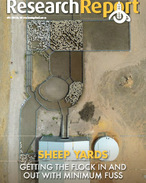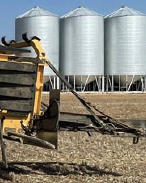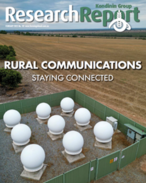This article is 4 years old. Images might not display.
Meat & Livestock Australia (MLA) said the bloat risk is greater, especially with lush and rapidly growing pastures with high legume contents.
According to MLA, bloat is a condition that can affect both cattle and sheep, but is more sensitive in cattle and is caused by an inability to eructate (burp) a build-up of gas in the rumen, which can either be free or frothy, causing pressure on the diaphragm, disturbing breathing and can cause death.
There are some distinctive clinical signals to identify bloat in animals grazing high-risk pastures. These include:
- Distension in the left upper flank
- Cattle not grazing and reluctant to move
- Cattle appear distressed as the condition is painful and they may be agitated and vocalise or rub their sides against objects
- Strain when urinating or defecating
- Sudden death
Producers who are concerned about the risk of bloat should take an integrated approach to preventing it this season. Bloat can be prevented by a number of management strategies including:
- Gain professional advice to determine bloat risk of pasture
- Assess and identify high-risk pastures for bloat, especially lush, growing pastures with a high legume content, such as lucerne and sub-clover
- Avoid grazing high-risk pastures during their growing stage - mature pastures are low risk
- If grazing high-risk pastures, apply mineral oil pasture sprays before grazing and treat trough water with a bloat oil formula.
- Bloat blocks/ licks and anti-foaming supplements may be of benefit.
- Ensure livestock have access to roughage such as hay. With higher risk conditions prevalent, do not put hungry animals onto that pasture. Cattle can be filled on roughage before being turned onto pasture to prevent them gorging as heavily.
Implementing prevention strategies should reduce the risk of bloating in livestock, however in cases where bloat has occurred, some treatment options include:
- Removing cattle from pastures immediately if signs of bloat occur
- A bloat drench, which may provide some relief in cases with early symptoms
- Veterinary application of stomach tubes, or trocar-and-cannula into the left paralumbar fossa
For more information on bloat and treatments visit: https://www.mla.com.au/research-and-development/animal-health-welfare-and-biosecurity/diseases/nutritional/bloat/ and https://www.dpi.nsw.gov.au/__data/assets/pdf_file/0009/111411/Bloat-in-cattle-and-sheep.pdf
A detailed article on bloat and its management was published in Farming Ahead No. 342 (July 2020).






















